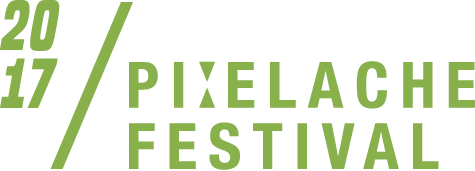Interview with Tuuli Malla and Lauri Jäntti, the artists behind Urban Hitchhiking,
a projects between contemporary art and urban activism, present at the festival
in the form of a free workshop day 24.9 starting from Sauna building at 14:30.
Why hitchhiking? What is the genesis of this project? Was there a motivation for you to explore such embodied encounters in the urban space through this particular method? What is the goal of creating a shared social space with a random stranger?
The idea of Urban Hitchhiking is a response to the core of hitchhiking - encountering strangers and sharing a journey with them. A car is not necessary for this. The goal of the Urban Hitchhiker is to be open for each encounter to define the direction of the journey. We are also interested in the act of becoming visible in public space and offering a space for people to come together.
In traditional hitchhiking, to hitchhike from A to B requires a certain amount of boldness, an open mind, to get over disappointments. It can be a long drawn out process sometimes ending in failure. As a performance, with an artistic goal do you carry these concerns too? Is the stark reality of hitchhiking embedded in your project? Or are you simply adapting the method to a pedestrian level?
Urban Hitchhiking very rarely require long periods of waiting for someone to stop. The language of hitchhiking with a thumb held up and a sign is familiar and makes the offer at least somewhat legible for those passing by, evoking curiosity of what the hitchhiker is after since the request does not include a specific geographical destination.
Why hitchhiking in the urban space? Whereas most of hitchhiking takes place on highways beyond city limits, a geography quite different from the urban grid. What does the urban pedestrian provide that a long-distance hitchhiker does not? What are you expecting to learn differently in the urban circumstances?
Cities are places where strangers pass each other allowing anonymity, sexual promiscuity etc. In smaller cities locals also bump into familiar faces but Urban Hitchhiking allows also bumping into strangers. We have also hitchhiked in less busy areas and found that waiting for a list in residential areas was more challenging, perhaps because people there have a stronger sense of privacy that the presence of a hitchhiker does not really fit into.
Why non-verbal communication? What do you hope to find through bodily gestures? What does the body provide that the voice does not? What is the role of memory in your project?
While running workshops and observing people try out Urban Hitchhiking we noticed how important it is for some participants to be guided into taking space for themselves in public space. Starting with the body is helpful for preparing for being looked at and being aware of the role of body language in proposing an invitation for encounters. There are also subtle ways of directing the invitation that are good to become conscious of.
What do you think of the matter of ‘speed’ in hitchhiking itself? In a traditional hitchhiking, speed becomes a factor, since a vehicle is involved, and also its visibility and appearance. Alertness is also important. How does speed or time itself matter to your project?
The speed and duration of Urban Hitchhiking varies and is occasionally increased if the journey includes public transport or even a car. Different forms of moving include different types of sociability. During the time of walking together eye contact is only held occasionally whereas sitting down for a coffee with the same person creates a different sense of being together eye to and also has an impact on the expectation of the length of time spent together.
How does Urban Hitchhiking relate to the Pixelache festival theme of ‘Local and Decentralized Governance’?
In connection to the Pixelache theme we approach the complexity of society as system, approached human by human. Meeting a random selection of people also includes encountering multiple opinions, topics of conversation and moods. This complexity stands in contrast with the Suomi100 narrative of a united people but also points out how easy it is to meet one another and listen on an individual basis when one is willing to do so.
Interviewer Bio
Samir Bhowmik is an architect, media artist and post-doctoral researcher at the Institute of Musicology and Media Studies (Humboldt University-Berlin) and Media Lab Helsinki (Aalto University) supported by the Finnish Cultural Foundation.
